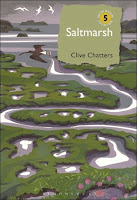 |
Overgrown
clay pit
|
 |
Speckled Wood
|
A
bright sunny morning after a shower. Sixteen members walked from the Balmer Lawn
Hotel in Brockenhurst, led by Angela, to the site of the Victoria Tilery and
into Pignal inclosure. Balmer Lawn is a low lying area liable to flooding and
one consequence is the appearance of many molehill-like mounds which are
thought to have been caused by silt and debris building up following
flooding. It is crossed by many drainage channels as the commoners are keen to
improve the grazing for their stock, and underground there are probably
drainage pipes made in the 19th century at the nearby Victoria Tilery. We
inspected a pit where clay may have been removed to make the pipes
and where there are some wild service trees, an unusual native tree.
 |
Sulphur Tuft
|
 |
Long-tailed Tit
|
Pignal
inclosure was famous for its butterflies in Victorian times but butterfly
collectors and bad management caused a big drop in their numbers. However, in
recent years the Forestry Commission has done a lot of restoration work in
keeping the ride edges clear and the Pearl-bordered Fritillary is making a comeback.
We saw a number of Speckled Wood and Red Admiral butterflies enjoying the
autumn sunshine. Southern Wood Ants were busy on their nests, foraging and
rearranging the pine needles to their liking. Also enjoying the sunshine was a
very small Common Lizard, warming up after a cold night. It was still quite
comatose and kept returning to a warm spot on a log. It was warm enough too for
a Common Darter to be patrolling the ride.
 |
Tiger's Eye
|
Among
the birds we saw were a flock of Long-tailed Tits and some rather argumentative
Ravens. There were a few fungi to be seen; a huge troop of Sulphur Tuft and Trametes versicolor at the car park, Green Elfcup, Tiger's Eye Coltricia perennis, and
some Fly Agaric, but little else that we could confidently identify during the walk. (AM)
All photographs
© Richard Coomber








